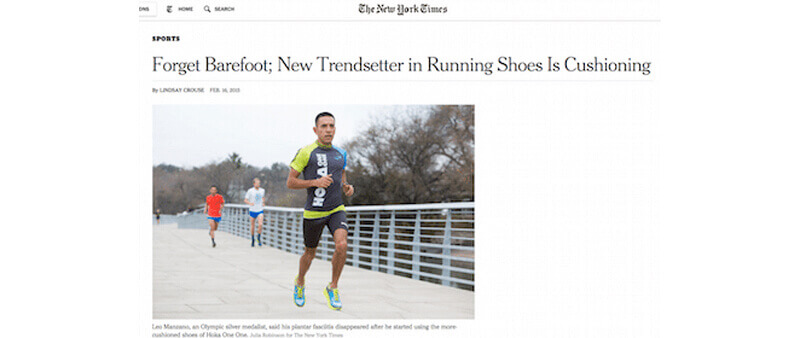The New York Times recently had an article discussing the new trend in running: maximum cushioning

The NY Times recently published an article that looks at what they assume is a new trend in running sneakers: cushioning. This is a complete reversal from the previous trend of minimalist running (e.g. barefoot running) to maximalist running. “Athletes who spent the past few years embracing or scorning barefoot running can now consider whether increasingly popular ‘maximalist’ shoes — with their chunky, heavily cushioned soles — are the sport’s new wonder product.” The article further stated that while sales for minimalist footwear, such as the ultra-minimal Vibram FiveFinger, reached $400 million USD in 2012, unsubstantiated claims and injuries ran rampant. So are maximalist shoes the solution? Some argue there just isn’t enough data out there to support the claims, some suggest they’re beneficial if worn in moderation, or on hard surfaces.ma.
While this new adaption may work for the injury-prone or very long distance runners, Regressing.com says this may not be true for the average casual runner. Citing Harvard professor Daniel Lieberman “excess cushioning could lead some runners to make harder impact than normal, seeking the feedback of proprioception.” In other words your body may make by fooled by the heavily cushioned shoes and make a harder impact to compensate.
The fact of the matter is, just as Regressing concludes, there isn’t enough research out there to state one style is better or healthier than the other. Head over to the NY Times for their take while Regressing’s piece can be seen here.
But what’s best for folks suffering from Morton’s neuroma?….We’ll soon have a full blog article on specifically on shoes for Morton’s neuroma but in the meantime here are a few tips:


By providing us with your information you are consenting to the collection and use of your information in accordance with our Terms of Service and Privacy Policy.